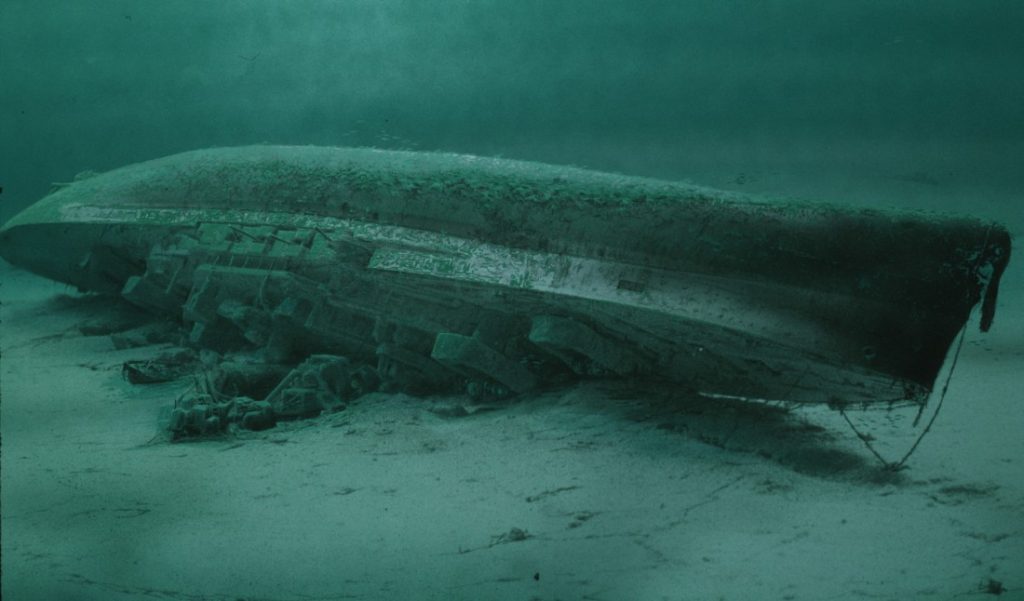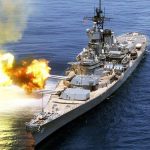Scapa Flow is a stretch of shallow water off the north coast of Scotland within the Orkney Islands. It has been used for centuries as a safe anchorage for ships with the most recent exploitation being by the British Admiralty who used it as a Royal Naval Base for the fleet during two World Wars.
Off the rugged coastline of the North of Scotland, the Orkney Islands are mostly a hazardous area open to the ravages of North Sea gales. However Scapa Flow is a sheltered stretch of water within the islands that has now become a popular location for diving enthusiasts who explore the German Navy wrecks at Scapa Flow that were scuttled in 1918.
The Islands Sanctuary for Ships
The Orkney Islands lie off the Scottish coast separated from the mainland by the Pentland Firth. This notorious stretch of water has very strong currents and is an invariably rough passage for ships of all sizes.
When I was a young engineer at sea I sailed as 4thEngineer on a small 2000T cargo vessel. In the summer we would run between UK and Canadian Lakes, and in the winter when the lakes were frozen up, we traded between Dublin and Kotka in Finland. This necessitated sailing round the top of Scotland through the Pentland Firth, and this was one of the roughest passages I ever sailed through especially when we were on ballast.
Back to the present. Scapa Flow is a safe anchorage off Orkney Island, lying between Flotta, Moy, and Ronaldsay as shown below in the image from Wiki Commons by Sailababamak. (Please click image to enlarge.)
Scapa Flow is a shallow, sandy-based bay and an ideal location for a safe anchorage. It has been used as this for centuries, even by the Vikings in the thirteenth century as a base for their Viking Warships between raids.

However it is its use by the British Naval Fleet during the historic era of the 1st and 2nd World Wars that we are going to examine now.
The First World War 1914 -1918
During the 1st World War between Germany and Britain, Scapa was used as the Northern Base for the British Fleet of battleships and cruisers.
However, the base was not as secure as was thought; a German U-boat managed to enter the flow. After this incident, blockships (in this case the blockships were old ships filled with concrete before being sunk to create an underwater defense) were sunk at strategic locations in the narrow straights between the islands. Floating log barriers were constructed and operated by tugs, and anti-sub nets erected around the perimeter in an effort to avert any similar incursions.
In 1916, the British fleet of battleships and cruisers set sail to take on the might of the Kaiser’s German Navy in what was to become known as the Battle of Jutland. This was a truly horrific sea battle reminiscent of the Nelson era where, after great loss of life and ships by each side, both Britain and Germany claimed victory. The remaining battleships of the British Grand Fleet returned to Scapa to continue to protect the British coast, but the German High Seas Fleet never went to sea again.
At the end of the war, battleships, battle cruisers, light cruisers and torpedo boats of the German High Seas Fleet was escorted to Scapa Flow for internment, where they remained under guard until their fate was to be decided. However, in 1919 the German Admiral in charge of the fleet, fearing the ships would be divided among Britain’s allies as spoils of war, ordered the ships to be scuppered.
He picked a day when the British fleet was out on exercises and, as the destroyers Vespa and Vega guard ships looked on in amazement, all the great German ships began to list and started to sink. Their crews took to the boats or jumped into Scapa Flow cold waters to be picked up by the British ships.
Some of the ships were beached but the majority sank to the bottom of the flow.
The majority did not remain on the bottom however, as all most were salvaged over a period of about 20 years and sold as scrap. This left eight wrecks on the bottom where they are still actively explored by divers.
The Second World War 1939-1945
Scapa Flow was again the choice of the British Admiralty to be their Home Fleet Northern Base. The warships sailed from here to escort the British and its Allies’ merchant ships on the Murmansk Arctic Convoys that were notorious for attacks from U Boat Packs.
Many of the merchant ships were sunk in these cold waters, were there was no chance of survival even if the crew managed to abandon a torpedoed ship. It is ironic that to avoid being burned alive on a flaming tanker, the crew jumped into the sea only to die of hypothermia in the freezing water.
Despite this there was never a shortage of crews to man the vessels; they were brave men each and every one of them.
Getting back to Scapa Flow, here in the first month of the war, the German U Boat U47 managed to sneak into Scapa between two of the northern blockships and the coast of the Orkney Island mainland.
She chanced raising her periscope and zeroed in on HMS Royal Oak, a “Revenge Class” battleship from the 1st World War and a survivor of the Battle of Jutland. She is shown below in an image from Wiki Commons by Ollinaie.
The Royal Oak was fitted with anti-torpedo bulges developed in the 1920’s and since replaced by more modern versions. These were water/air compartments welded to the hull of the battleship at its waterline to protect the hull from the effects of a torpedo blast wave and fragments. Despite this, once the U Boat unleashed her torpedoes into the Royal Oak, creating a 30’ hole in her hull, she sank surprisingly quickly with a loss of over 830 of her compliment of 1400 crew.
Following the sinking of the Royal Oak, Winston Churchill, the First Sea Lord, ordered an investigation and had the defenses strengthened. Anti-aircraft guns were employed, minefields planted, and more blockships emplaced. Some of the islands were linked with concrete block causeways, constructed by Italian POW’s, and are still in use today as inter-island roads.
So that’s about it: a little piece of history retelling the role that Scapa Flow played in two World Wars as an anchorage for the British Warships- and how a German Submarine managed to infiltrate the defenses and sink the Royal Oak.
The Royal Oak now lies upside down in 90’ of water at the bottom of Scapa Flow, her keel being visible from the surface on a calm day. The area has been designated a National War Grave and every year on 13th October there are memorial services held at the site of the wreck that is marked by a buoy.
The area is well worth a visit and there is an excellent visitor center on the Island of Hoy that is home to many wartime artifacts associated with the 1st and 2nd World Wars.




Comments are closed